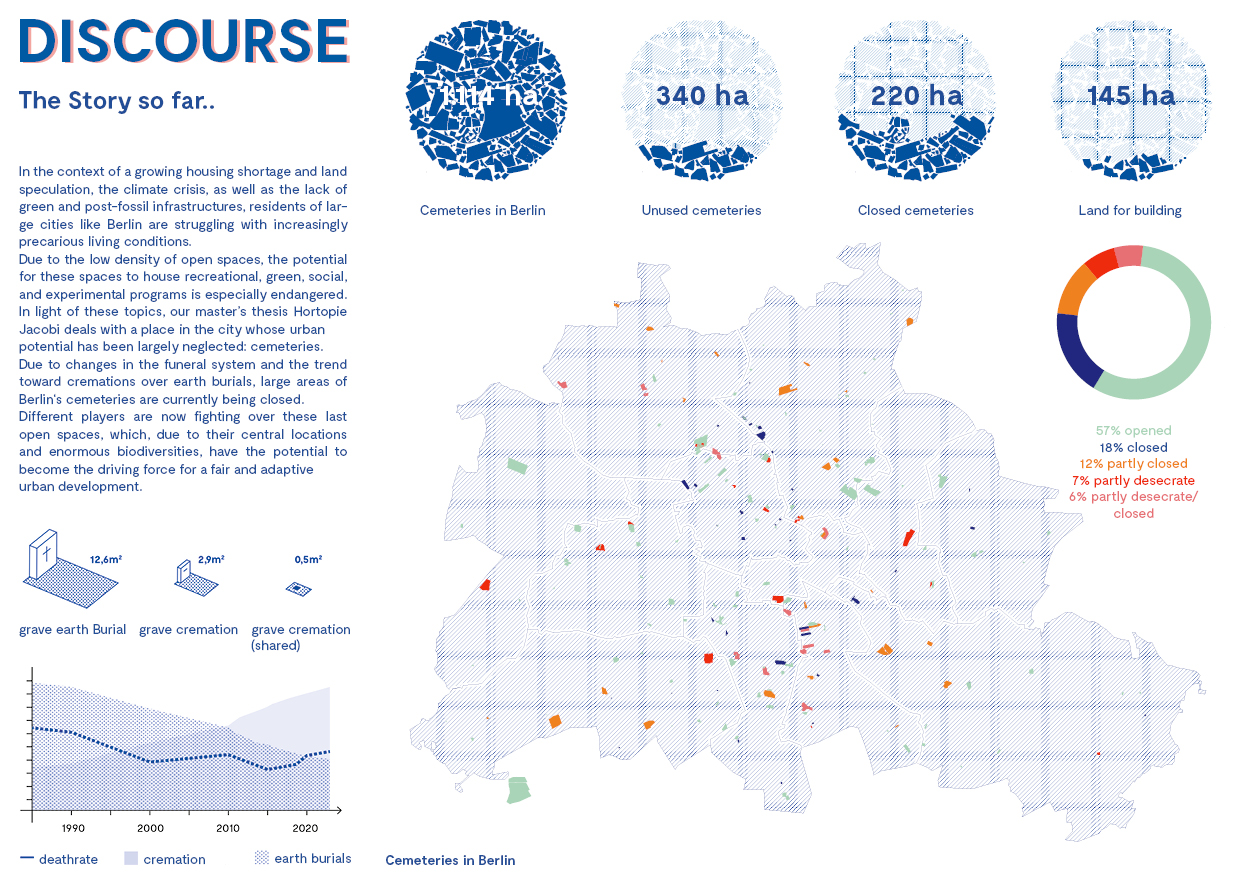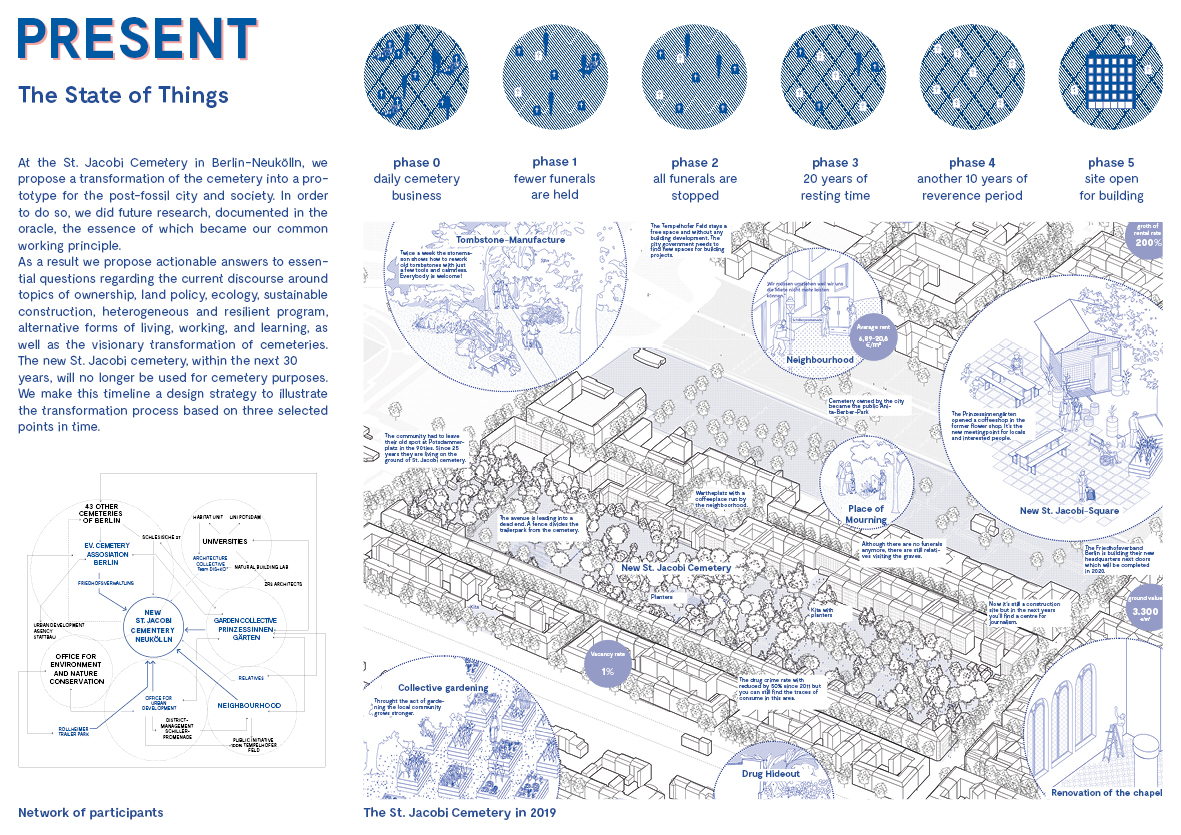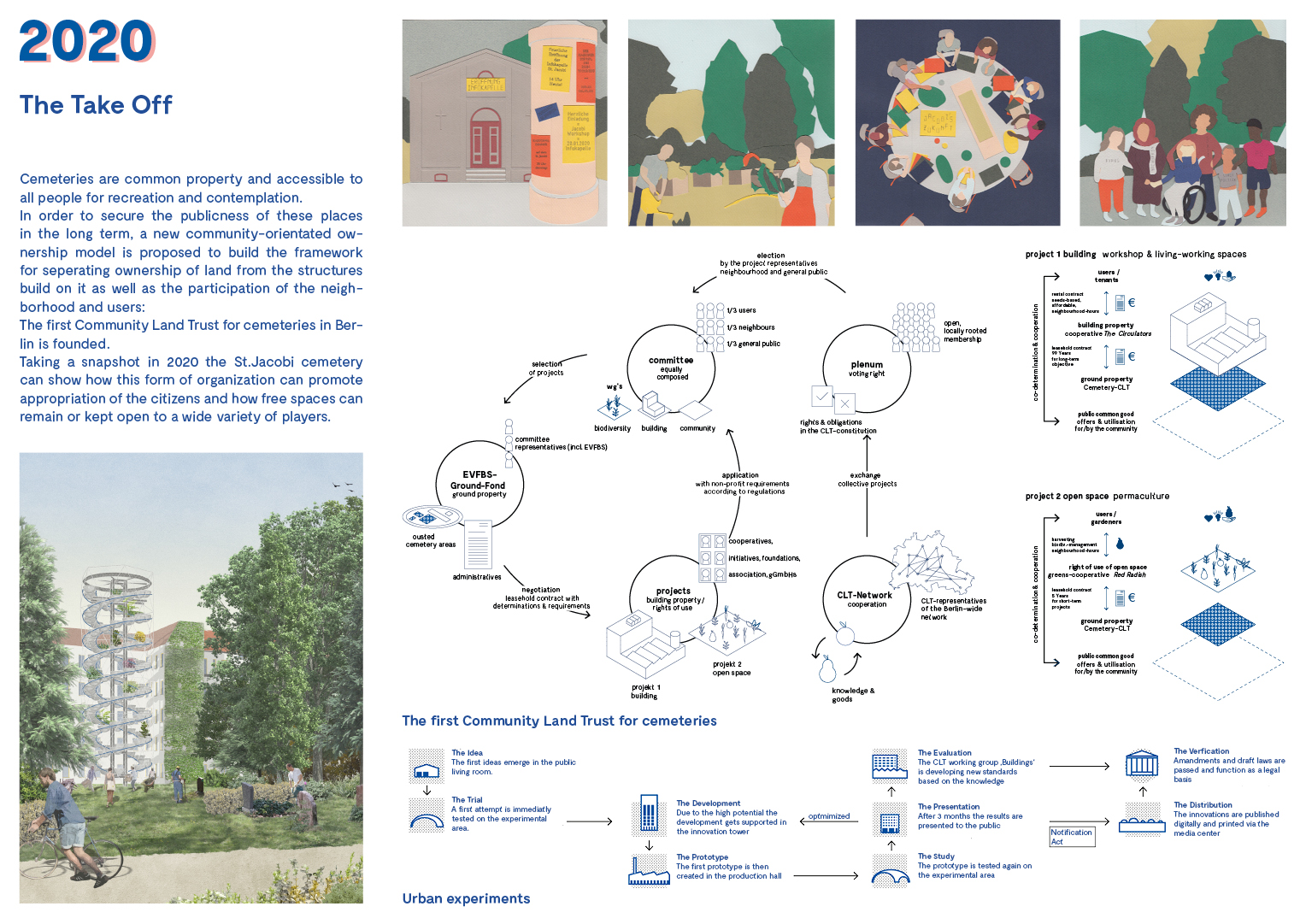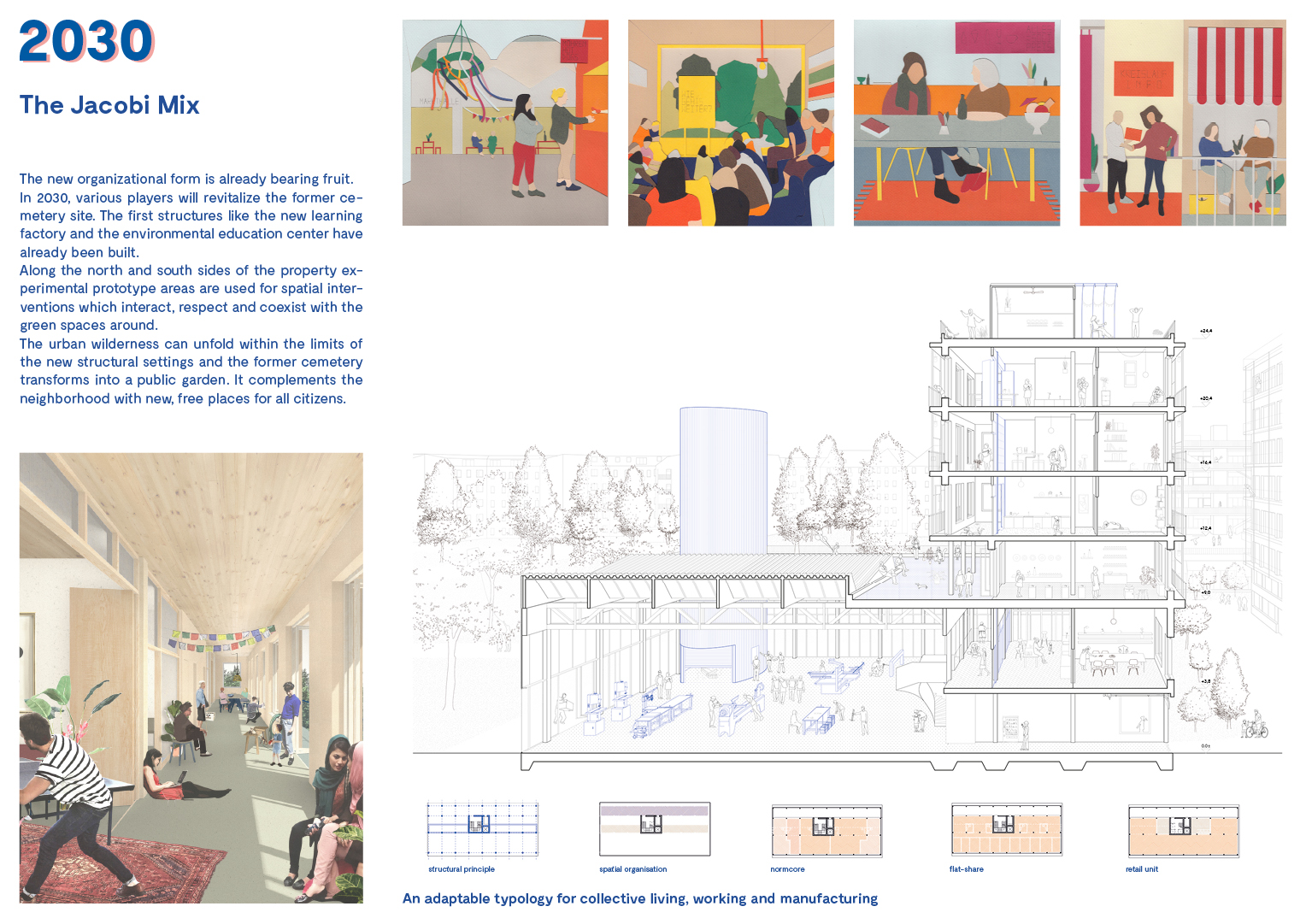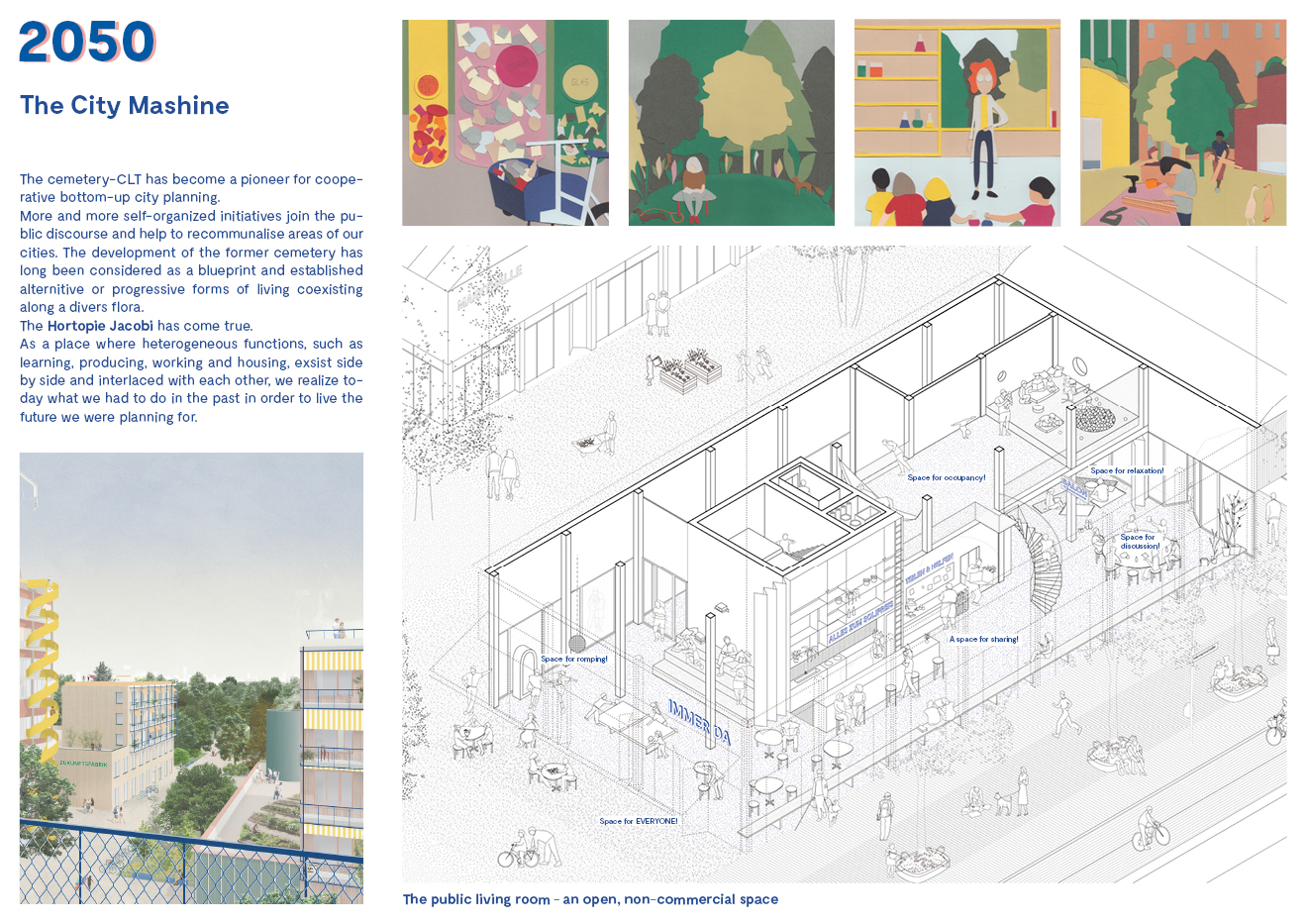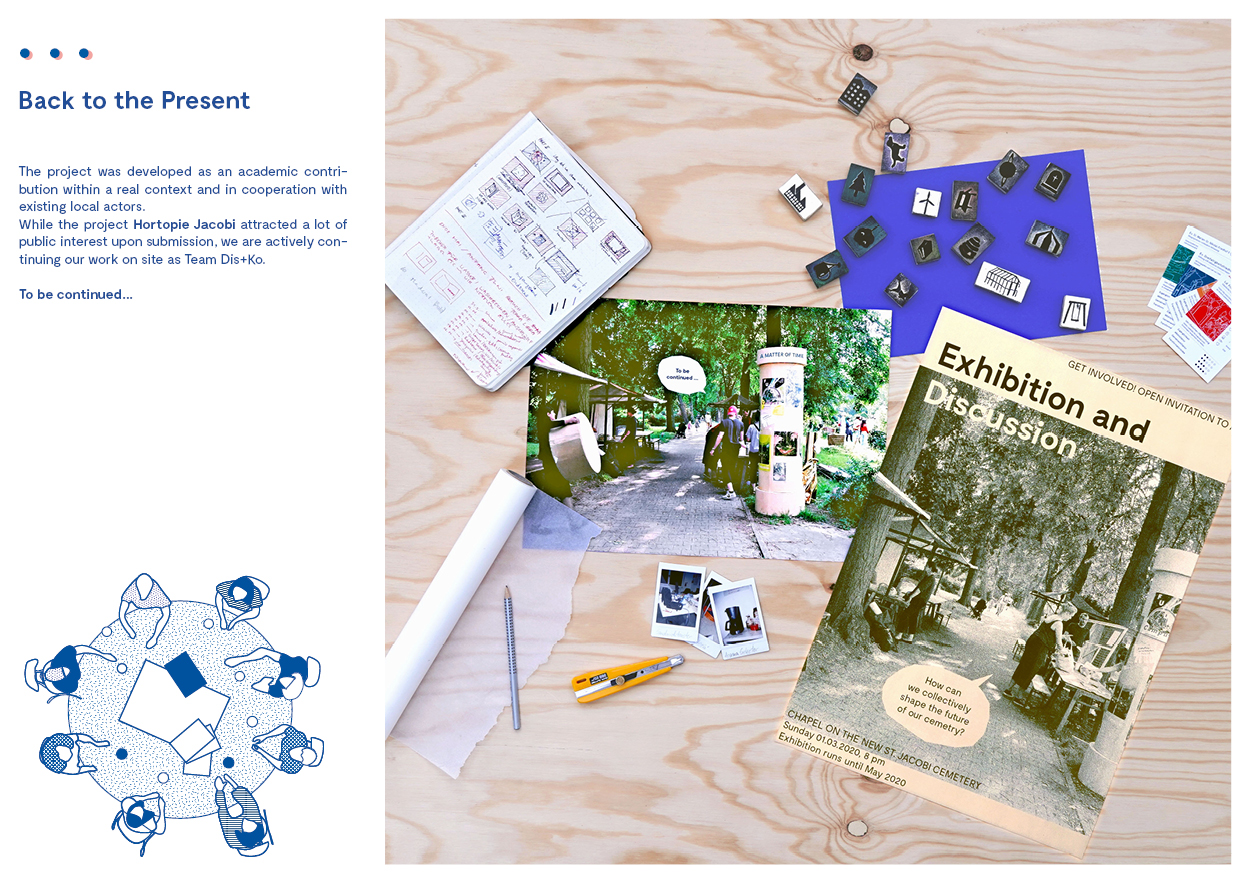With ›Hortopie Jacobi‹, Team Dis+Ko is developing a sustainable and resilient transformation strategy for the St Jacobi Cemetry in Berlin Neukölln.
Hortopie Jacobi is a project by Team Dis+Ko: Flavia Biianu, Sina Jansen, Lisa-Marie Kolbinger, Julian Mönig, Samuel Reichl, Lisa Reis, Binta von Rönn und Nina Wester. The project is one of the 40 international projects shortlisted for the 2020 Young Talent in Architecture award by the Mies van der Rohe Foundation and was voted best Thesis Project 2020 from the TU Berlin Institut für Architektur.
We are an interdisciplinary collective from Berlin, proudly presenting our collective Master’s thesis “Hortopie Jacobi” which focuses on the transformation of cemeteries.
The project proposes a strategy for the sustainable and resilient transformation of former cemeteries. Working together with real players and in the context of the 2019 closed cemetery “New St. Jacobi” in Berlin-Neukölln, Team Dis+Ko illustrate how this green space can be sensitively transformed into a new urban typology for the post-fossil future.
Due to the changes in the funeral system and the trend toward cremations over earth burials, large areas of Berlin´s cemeteries are currently being closed. Different players are now fighting over these last open spaces, which, due to their central location, enormous biodiversity and public ownership, have the potential to become the driving force for fair urban development. While cemeteries were once part of everyday life, where markets, farming and animal husbandry took place, we have now become accustomed to avoiding these places. So how can we make cemeteries more diverse again, implementing current urban issues such as ownership, living models, density, land policy and ecology?
Within the next 30 years, the New St. Jacobi cemetery will no longer be used for cemetery purposes. We make this timeline a design strategy to illustrate the transformation process based on three selected points in time, each focusing on different levels of intervention.
